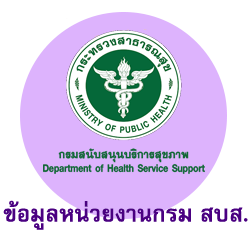การจัดทำยุทธศาสตร์การลดบริโภคเกลือและโซเดียม โดยกระบวนการมีส่วนร่วมของภาคีเครือข่าย
คำสำคัญ:
กระบวนการมีส่วนร่วม, ยุทธศาสตร์การบริโภคเกลือและโซเดียมบทคัดย่อ
โรคไม่ติดต่อเรื้อรัง จัดเป็นปัญหาสุขภาพที่สำคัญทั้งในระดับประเทศและระดับโลก สาเหตุสำคัญประการหนึ่ง คือ การมีพฤติกรรมการบริโภคที่ไม่เหมาะสม ซึ่งมีหลักฐานวิชาการยืนยันชัดเจนแล้วว่า การได้รับโซเดียมในปริมาณมากกว่าความต้องการ มีความสัมพันธ์ต่อการเกิดโรคความดันโลหิตสูง โรคไต และโรคหลอดเลือดสมอง ในขณะที่การดำเนินงานเพื่อลดการบริโภคเกลือและโซเดียมที่ผ่านมามีข้อจำกัดและความท้าทาย ในแทบทุกด้าน เช่น การขาดกลไกและยุทธศาสตร์การดำเนินงานที่ชัดเจนเพื่อการจัดการปัญหา,การประสานงานเพื่อบูรณาการการดำเนินงานระหว่างภาคเครือข่าย และการติดตามและประเมินผล
การศึกษาครั้งนี้เป็นการวิจัยเชิงปฏิบัติการ (Operations research) เพื่อกำหนดกรอบและเป้าหมายของการจัดทำยุทธศาสตร์การลดการบริโภคเกลือและโซเดียม ที่เหมาะสมกับบริบทของประเทศไทย และค้นหามาตรการและประเด็นสำคัญภายใต้ยุทธศาสตร์การลดการบริโภคเกลือและโซเดียมเพื่อมุ่งผลให้บรรลุวิสัยทัศน์และเป้าประสงค์ที่กำหนดไว้ โดยสอดคล้องตามบทบาทภารกิจขององค์กร โดยระเบียบวิธีเชิงคุณภาพ แบ่งการศึกษาเป็นระยะ ได้แก่ ระยะการทบทวนและเตรียมการ โดยผู้วิจัยใช้การวิเคราะห์เอกสาร (Documentary Analysis) เพื่อศึกษาความเป็นไปในการจัดทำยุทธศาสตร์การลดการบริโภคเกลือและโซเดียมระยะการพัฒนากรอบและรูปแบบของยุทธศาสตร์การลดการบริโภคเกลือและโซเดียมโดยการมีส่วนร่วมของหน่วยงานทั้งภาครัฐและภาคเอกชนที่เกี่ยวข้องกับกระบวนการผลิตและการจำหน่าย การสื่อสาร การพัฒนาความรู้แก่ประชาชน การพัฒนาศักยภาพผู้บริโภค การออกกฎหมาย-ข้อบังคับ และอื่นๆ ที่เกี่ยวข้องกับการลดการบริโภคเกลือและโซเดียมในประเทศไทย ทั้งทางตรงและทางอ้อม จำนวน 54 หน่วยงาน โดยผู้วิจัยใช้แผนที่ผลลัพธ์ หรือ Outcome mapping ถูกพัฒนาขึ้นโดยสถาบันวิจัยและพัฒนา (IDRC) เป็นเครื่องมือสำคัญในการสร้างยุทธศาสตร์การลดการบริโภคเกลือและโซเดียมของประเทศไทยที่ได้กำหนดร่วมกับภาคีเครือข่ายอย่างมีส่วนร่วม และระยะการพัฒนาสู่ข้อเสนอเชิงนโยบาย ด้วยกลไกของสมัชชาสุขภาพแห่งชาติ
ผลการศึกษาระยะที่ 1 พบว่า การจัดทำยุทธศาสตร์เพื่อสนับสนุนการลดการบริโภคเกลือและโซเดียมเป็นวาระระดับชาติ มีความสำเร็จมาแล้วในหลายประเทศ และเป็นเครื่องมือสำคัญในการกำหนดทิศทางการดำเนินงานร่วมกันกับภาคีเครือข่ายจากหลายภาคส่วน ซึ่งเหมาะสมอย่างยิ่งกับรูปแบบการได้รับโซเดียมของคนไทยที่มีที่มาจากหลายแหล่ง ทั้งจากการปรุงประกอบเอง การรับประทานอาหารนอกบ้าน และ การบริโภคอาหารอุตสาหกรรม นอกจากนี้ยังมีมิติด้านค่านิยมและวัฒนธรรมการบริโภคเข้ามาเกี่ยวข้องอีกด้วย ภาคีเครือข่ายที่จะเข้ามามีส่วนร่วมจากภาคสาธารณสุขจึงไม่เพียงพอ ระยะที่ 2 การพัฒนากรอบและรูปแบบของยุทธศาสตร์การลดการบริโภคเกลือและโซเดียม ผลจากขั้นตอนแรกนำไปสู่การดำเนินงานร่วมกันของกรมควบคุมโรคและภาคีเครือข่าย ซึ่งผู้วิจัยเลือกใช้เครื่องมือแผนที่ผลลัพธ์ (Outcome Mapping) ซึ่งเครื่องมือดังกล่าวเหมาะกับการสร้างการมีส่วนร่วมผ่านการระดมสมองจากภาคีเครือข่ายที่มีความหลายหลาย ร่วมกับกระบวนกลุ่ม เพื่อร่วมคิด ร่วมตัดสินใจ ในการกำหนดยุทธศาสตร์การลดการบริโภคเกลือและโซเดียม เป้าหมาย มาตรการ และผลลัพธ์ที่ต้องการ ทั้งระยะสั้น ระยะกลาง และระยะยาว รวมถึงสร้างข้อตกลงจากหน่วยงานภาคีเครือข่ายในการร่วมขับเคลื่อนการดำเนินงานตามบทบาทและภารกิจของหน่วยงานบนเข็มมุ่งเดียวกัน จากขั้นตอนนี้ ผลลัพธ์หลักที่ได้จากการมีส่วนร่วมของทุกภาคส่วนที่เกี่ยวข้องกับผลสำเร็จในการลดการบริโภคเกลือและโซเดียม คือ ยุทธศาสตร์การลดการบริโภคเกลือและโซเดียมของประเทศไทยปี 2559-2568 ประกอบด้วย 5 ประเด็นยุทธศาสตร์ย่อย ดังนี้ 1) ยุทธศาสตร์ S (Stakeholder network) การสร้างพัฒนาและขยายภาคีเครือข่ายความร่วมมือ, 2) ยุทธศาสตร์ A (Awareness) การเพิ่มความรู้ ความตระหนัก และเสริมทักษะให้ประชาชน ชุมชน ผู้ผลิต/ผู้ประกอบการ บุคลากรวิชาชีพที่เกี่ยวข้องและผู้กำหนดนโยบาย, 3) ยุทธศาสตร์ L (Legislation and environmental reform) การปรับเปลี่ยนสิ่งแวดล้อมเพื่อให้เกิดการผลิต ปรับปรุง เปลี่ยนแปลง และเกิดผลิตภัณฑ์ที่มีโซเดียมต่ำ รวมทั้งเพิ่มทางเลือกและช่องทางการเข้าถึงอาหารที่ปริมาณโซเดียมต่ำ, 4) ยุทธศาสตร์ T (Technology and innovation) การพัฒนางานวิจัยและองค์ความรู้และการนำสู่ปฏิบัติ และ 5) ยุทธศาสตร์ S (Surveillance, monitoring and evaluation) การพัฒนาระบบเฝ้าระวัง ติดตามและประเมินผล เน้นตลอดกระบวนการ ผลผลิต และผลลัพธ์ โดยมีเป้าหมายให้ประชาชนมีสุขภาพดี จากการลดบริโภคเกลือและโซเดียมลดลงร้อยละ 30 ภายในปี 2568
ข้อเสนอแนะ การพัฒนาสู่ข้อเสนอแนะเชิงนโยบายในแต่ละยุทธศาสตร์ ในระยะที่ 3 ควรให้ความสำคัญการมีส่วนร่วมผ่านกลไกสมัชชาสุขภาพแห่งชาติ (National Health Assembly) เพื่อกำหนดเป็นนโยบายระดับประเทศ นำสู่การปฏิบัติและการติดตามประเมินผล โดยความร่วมมือของทุกภาคส่วน
เอกสารอ้างอิง
Apinya, T. (2013). The results of the review of the prevention of non-communicable disease in lifestyle. Reduction of salt intake. Bangkok: The Veterans Administration Hospital.
Bureau of Nutrition, Department of Health, Ministry of Public Health. (n.d.). National Nutrition Survey Of Thailand 1-5. Retrieved
September 5, 2016, from http://nutrition. anamai.moph.go.th/temp/main/upbook/files/910.pdf.
Department of Health, Ministry of Public Health. (2009). Soybean consumption survey report. Of the Thai population. Nonthaburi: Bureau of Nutrition.
Department of Disease Not Contact Department of Disease, Control Salinity Reduction Network & Kidney Disease Association. (2014,
– 26 November). Workshop Summary Report The Strategic Plan to Reduce Salt Consumption (Sodium) in Thailand. Bangkok: Furama Hotel Silom.
Ekklakorn, V. (2016). The report of the Thai Health Survey by the 5th National Health Examination in 2014. Bangkok: graphic font and design.
International Health Policy Program. (2012). Burden of Disease and Injury of Population in Thailand 2009. Nonthaburi: The Grafico
Systems Co., Ltd.
Kriangsinyoth, W. (2012). Reduce Sodium Life Expectancy. Bangkok: The Veterans Administration Printing House.
Rapeepat, A. (1984). Community participation in rural development in social conditions And Thai culture. Bangkok: Saksopha Publishing.
Roopngam, Y. (2002). Participation of government officials in budgetary reform in Bureaucratic reform. Master of Arts (MA), National Institute of Development Administration.
“Salt consumption.” Ministry of Public Health notification. Volume 128, Special Editions, April 7, 2011.
Thamrangsri, T. (Ed.). (2014). NCDs Situation Report on Crisis, Health, Crisis, Society.
Nonthaburi: International Health Policy Program & Health Promotion Policy Research Center (HPR).
Thai Health Survey Office Health Systems Research Institute. (n.d.). Food consumption survey Of the Thai people. Retrieved September 5, 2016, from http://kb.hsri.or.th/dspace/handle/11228/3363.
The Food and Drug Administration. (n.d.). Research Report on Situation of Nutrition and Sodium Content on Food Labeling in
Ready-to-Eat Ready-to-Eat Products 2012-2015. n.p.
The Food and Drug Administration. (2016). Notification of the Ministry of Public Health, Re: Fish Sauce (No.2). Phranakhon Rajabhat
University Humanities and Social Sciences. 1(2).
Sringanyuang, L., Wongsinda, T., & Apichakkulchai, T. (n.d.). Situation of sodium intake in Thai population: quantitative study. Retrieved May 22, 2012, from http://thaincd.com/document/file/download/paper-manual/
download1no167.pdf.
Strategy and Planning Division Ministry of Public Health. (n.d.). Cause of death. Retrieved August 6, 2016, from http://bps.ops.moph.
go.th/Ill/ patient/ patient year 2009.xls.
Wongkietrat, W., et al. (2005). Strategic planning: the art of mapping organization toward excellence. Bangkok: Thailand Productivity
Institute.
World Health Organization. (2011). Global status report on noncommunicable diseases 2010. Geneva: World Health Organization.
ดาวน์โหลด
เผยแพร่แล้ว
วิธีการอ้างอิง
ฉบับ
บท
การอนุญาต
ลิขสิทธิ์ (c) 2019 Journal of Department of Health Service Support-วารสารวิชาการกรมสนับสนุนบริการสุขภาพ

This work is licensed under a Creative Commons Attribution-NonCommercial-NoDerivatives 4.0 International License.



